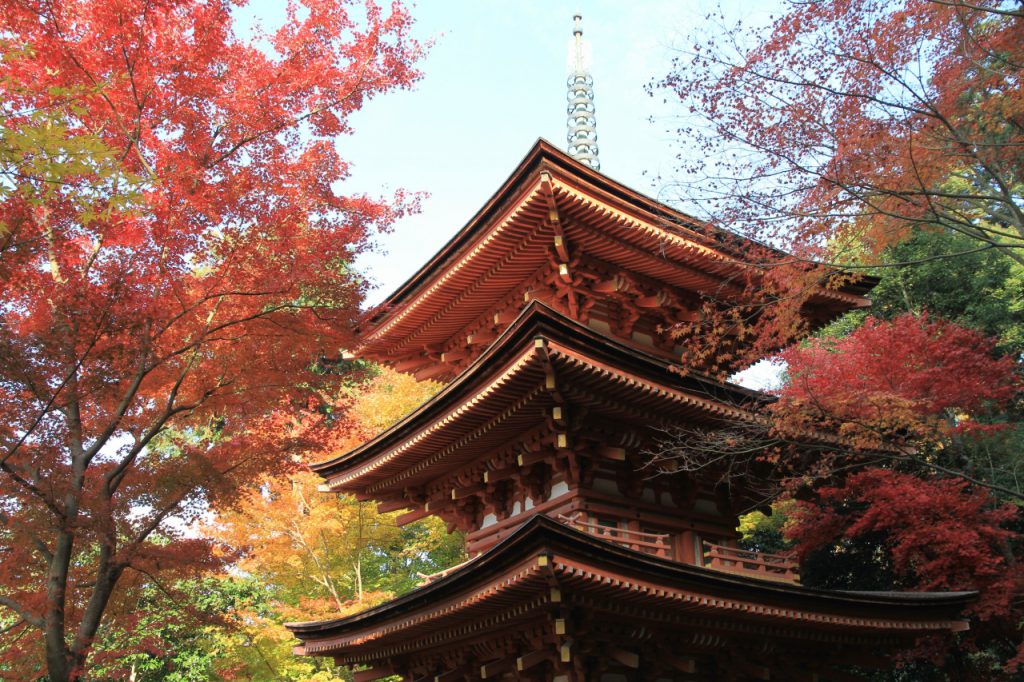
Joruri-ji Temple is located in Kizugawa City, the southern part of Kyoto, which has been called Tohno-no-Sato. Geographically, it is close to Heijokyo and Todaiji Temple in Nara, and I often would walk while visiting the stone towers and stone Buddha statues dating back to the Kamakura period. From ancient times, it is said that the monks who were strongly influenced by Nanto Buddhism and who were reluctant to secularize Nara Buddhism built Soan as a place of tranquility and devoted themselves to Nembutsu. It is said that Soan eventually transformed into a temple, and the tower heads lined up to form a “tower ridge,” which eventually became known as “Tohno.” Nine Amida Nyorai statues enshrined in the main hall of Joruri-ji Temple and the three-storied pagoda at the end of the Heian period remain, which conveys the atmosphere of the Heian period temple.
浄瑠璃寺が所在するのは、当尾の里と呼ばれてきた京都の南部木津川市です。地理的には奈良の平城京や東大寺からも近く、鎌倉時代に遡る石塔や石仏を訪ねながら歩いてよく行ったものです。古来、南都仏教の影響を色濃く受け、世俗化した奈良仏教を厭う僧侶達が穏遁の地として草庵を結び、念仏に専心したと伝えられています。やがて草庵が寺院へと姿を変え、塔頭が並び「塔の尾根」ができ、いつしか「当尾」と呼ばれるようになったといわれます。浄瑠璃寺本堂に安置された9体の阿弥陀如来像や平安末期の三重塔が残り、平安朝寺院の雰囲気を今に伝えています。
